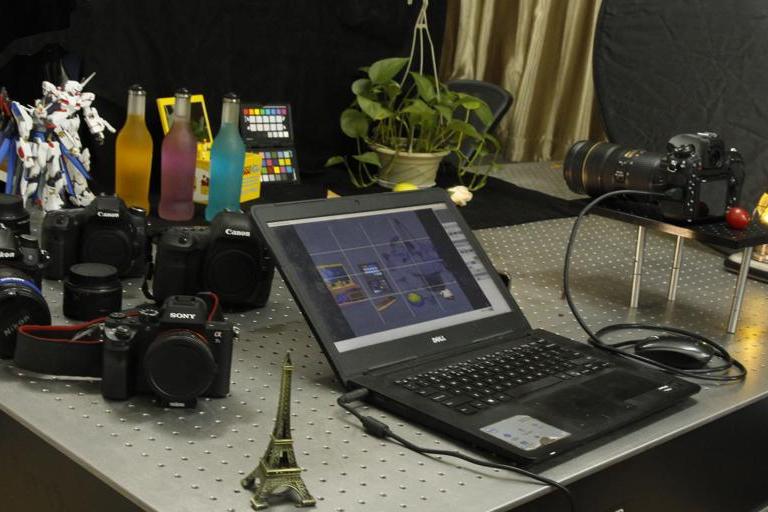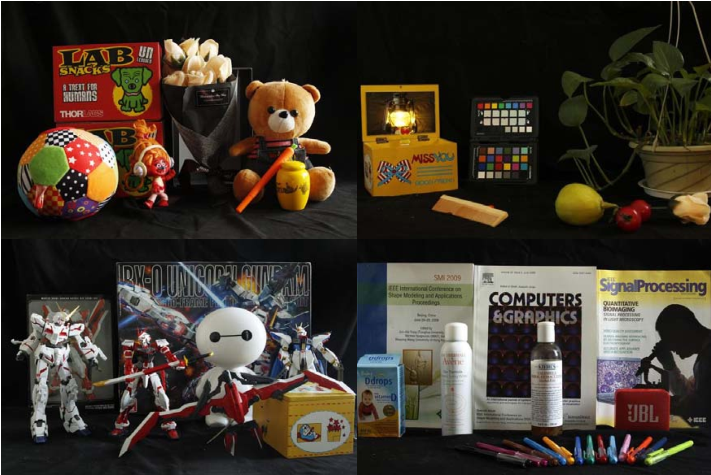The implementation of CVPR 2020 (Oral) paper "A Physics-based Noise Formation Model for Extreme Low-light Raw Denoising"
News (16/07/2020): Release the ELD dataset and our pretrained models at GoogleDrive and Baidudisk (0lby)
- We present a highly accurate noise formation model based on the characteristics of CMOS photosensors, thereby enabling us to synthesize realistic samples that better match the physics of image formation process.
- To study the generalizability of a neural network trained with existing schemes, we introduce a new Extreme Low-light Denoising (ELD) dataset that covers four representative modern camera devices for evaluation purposes only. The image capture setup and example images are shown as below:
- By training only with our synthetic data, we demonstrate a convolutional neural network can compete with or sometimes even outperform the network trained with paired real data under extreme low-light settings. The denoising results of networks trained with multiple schemes, i.e. 1) synthetic data generated by the poissonian-gaussian noise model, 2) paired read data of SID dataset and 3) synthetic data generated by our proposed noise model, are displayed as follows:
- Python >=3.5, PyTorch >= 1.0.1
- Requirements: opencv-python, tensorboardX
- Platforms: Ubuntu 16.04, cuda-8.0
Due to the business license, we are unable to to provide the noise model as well as the calibration method. Instead, we release our collected ELD dataset and our pretrained models to facilitate future research.
To reproduce our results presented in the paper (Table 1 and 2), please run ELD_preprocess.py first to standardize the file names of the ELD dataset
and then take a look at scripts/test_SID.sh and scripts/test_ELD.sh
More surprising results will be revealed in our journal version of this work in future.
The dataset capture protocol is shown as follow:
We choose three ISO settings (800, 1600, 3200) and four low light factors (x1, x10, x100, x200) to capture the dataset (x1/x10 is not used in our paper). Image ids 1, 6, 11, 16 represent the long-exposure reference images. Please refer to ELDEvalDataset class in data/sid_dataset.py for more details.
If you find our code helpful in your research or work please cite our paper.
@inproceedings{wei2020physics,
title={A Physics-based Noise Formation Model for Extreme Low-light Raw Denoising},
author={Wei, Kaixuan and Fu, Ying and Yang, Jiaolong and Huang, Hua},
booktitle={IEEE Conference on Computer Vision and Pattern Recognition},
year={2020},
}
If you find any problem, please feel free to contact me (kaixuan_wei at bit.edu.cn). A brief self-introduction (including your name, affiliation and position) is required, if you would like to get an in-depth help from me. I'd be glad to talk with you if more information (e.g. your personal website link) is attached. Note I would not reply to any impolite/aggressive email that violates the above criteria.




